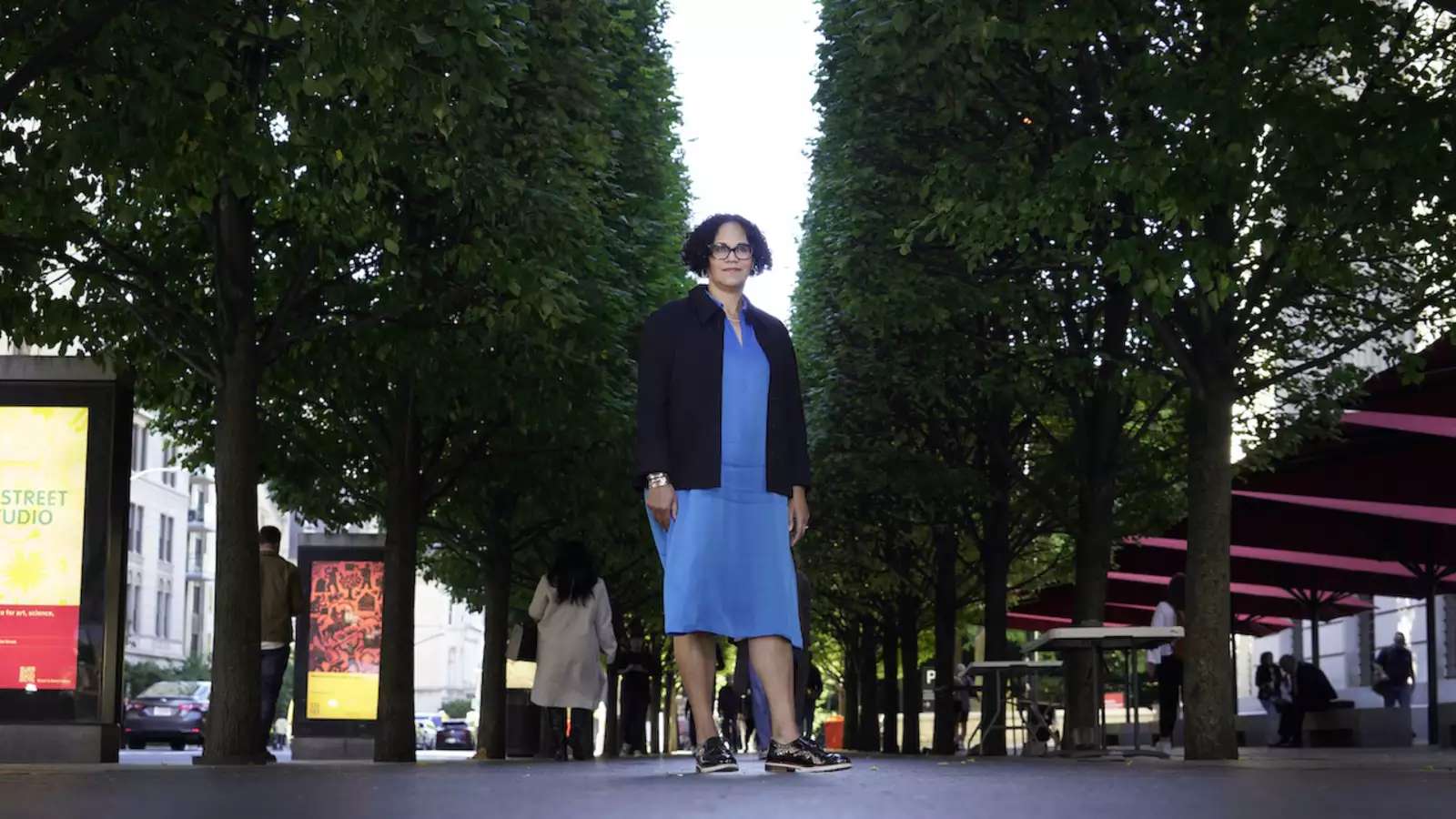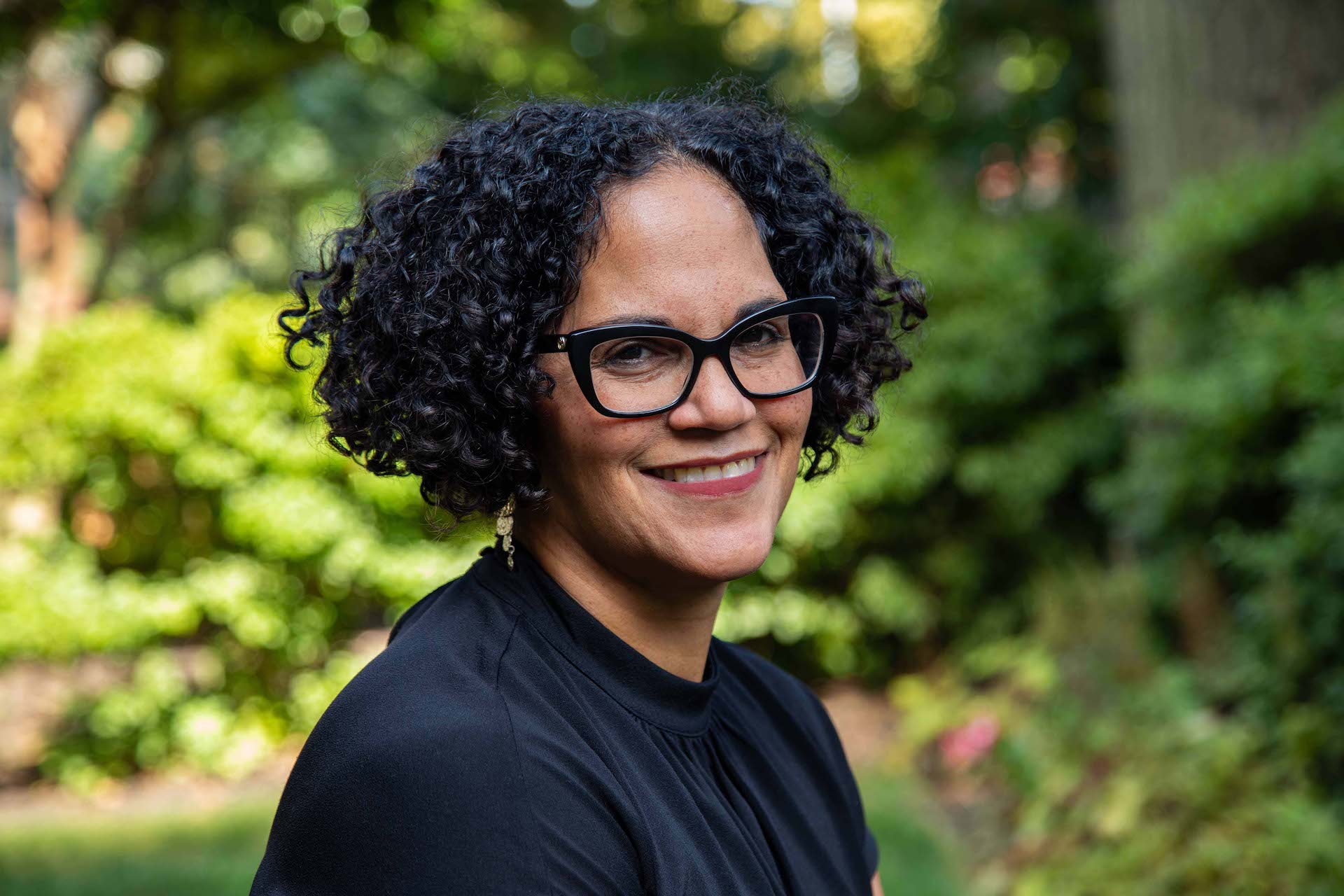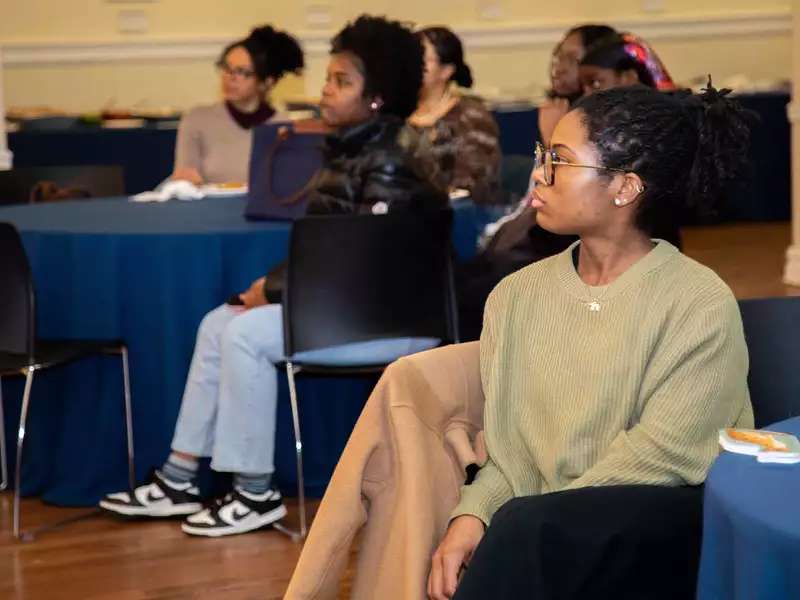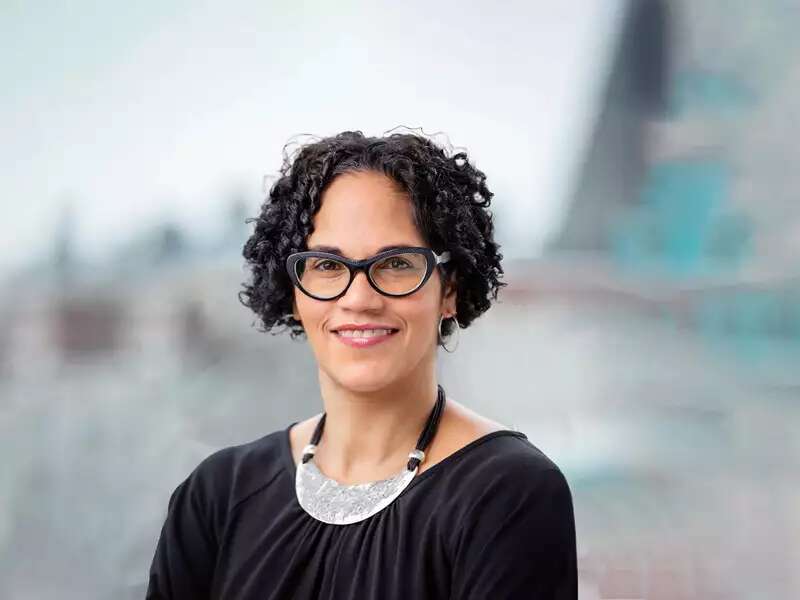
Monica L. Miller — professor and chair of the Africana Studies Department — is an interdisciplinary scholar whose research encompasses literature, film, and contemporary art. For 15 years, since publishing her 2009 award-winning book, Slaves to Fashion: Black Dandyism and the Styling of Black Diasporic Identity, Miller has been a sought-after cultural historian of dress and fashion, particularly around the politics and aesthetics of Black style. Yesterday, the Metropolitan Museum of Art announced that she is the guest curator for the Costume Institute’s spring 2025 exhibition, “Superfine: Tailoring Black Style.” Read Barnard’s announcement here.
“This is an unbelievable opportunity, literally unimaginable until it wasn’t,” said Miller. “I was shocked and so incredibly honored when the Costume Institute contacted me. To be given the chance to reimagine my book on Black dandyism with historical and contemporary garments and accessories, not as words on a page but as the Met’s Costume Institute spring show, is a thrill, a dream, an honor — and a responsibility.”
Running from May 10 to October 26, 2025, the exhibition will open just a few days after the highly anticipated Met Gala on May 5, giving style mavens and cultural historians the opportunity to view the pieces that Miller and her curatorial collaborators at the Met have handpicked. Next summer, Miller plans to bring Barnard students into the Black dandy discussion by teaching a class based on the exhibition, and in fall 2025, she will teach a course titled Cultural History of Black Fashion and Dress.
In this “5 Questions With …,” read about Miller’s ongoing experiences at the Met:
What does it mean to be a “guest curator” for fashion’s biggest exhibition?
Being a guest curator is like being a guest editor for a publication. As the “guest,” I have access to all of the resources of the Costume Institute, its excellent curatorial team in particular. I am working with them to create and manage all aspects of the show, including the exhibition interpretation and design, as well as the design and contents of the catalog. Right now, we are working very hard on the checklist, sourcing items in the Costume Institute’s collection as well as garments and other objects from museums, galleries, and private collections. We are inviting contributors to the catalog and working with an advisory board of eminent Black fashion scholars and curators who are generously offering their good counsel.
How did you think about translating your scholarship on Black style so that it fit a visual format?
This has been the joy and challenge of the exhibition. Because my book covers 300 years of Afrodiasporic history, we have the opportunity to discuss the relationship between fashion, dress, and power from the beginning of the slave trade to the present. Because of the dearth of extant garments worn by the enslaved, and Black people in general up until the early 20th century, we had to think about the history of dandyism in the ways in which I wrote about it, as seen in literary texts, paintings, and prints.
The exhibition will have the ability to go beyond that in terms of showing historical garments and contemporary fashion that is informed by the history that I recounted. My book is a theoretical and methodological base for the exhibition, but because the exhibition centers fashion objects, it is a really different experience.
Was it challenging to go from wearing an academic hat to a curator’s instead?
Yes and no. I have been a consultant on exhibitions at the Museum at FIT [“Fresh, Fly, and Fabulous: Fifty Years of Hip Hop Style”] and the V&A Museum [“Africa Fashion”], as well as the New-York Historical Society’s upcoming exhibition on the LGBTQ+ Harlem Renaissance, so I had some sense of how an exhibition is planned.
You can think of planning an exhibition similarly to what it means to design a new course — all
exhibitions have to be justified as intellectual endeavors according to what they will teach the audience. Each aspect of the exhibition is like a class session: What are the relevant texts, what do we want to say about them, how do they build on one another, what discussions do they elicit? Museum curators often have Ph.D.s and approach their work with exactly the same rigor that professors do. Curators have the added challenge of a different order of accessibility, though — the exhibition I am working on has to appeal to a very wide audience.
What is it about Black style and your research that inspired the show?
Slaves to Fashion was one of the first academic monographs to analyze how Black people have used fashion, dress, and style as a way to imagine their political and cultural possibilities over time in the African diaspora. Since this is one of the first shows at the Met Costume Institute (CI) centering Black fashion and style, wearers and designers, my book on dandyism was a good fit as a cultural history that could be imagined on the scale of a CI show.
What is a typical day as guest curator at the Costume Institute like?
Because Costume Institute shows go up fast, about one year from conception to opening, every day feels different, depending on what needs to get done. I had a great day recently that involved a visit to an artist’s studio in Brooklyn to look at a commission related to the show, a meeting with the publications team about choosing a designer for the catalog, a few hours of email related to all aspects of the show, and then a long meeting with the curatorial team to discuss potential objects for one part of the show. I’ve had other days in which I’ve learned about different kinds of mannequins and how they are dressed, as well as how some of the garments in the show will be treated and conserved. I’m learning something every day, which is making this experience so special, rewarding, and thrilling.
For more on Miller’s style research, read “The Style Series | Exploring Global Black Style.”





